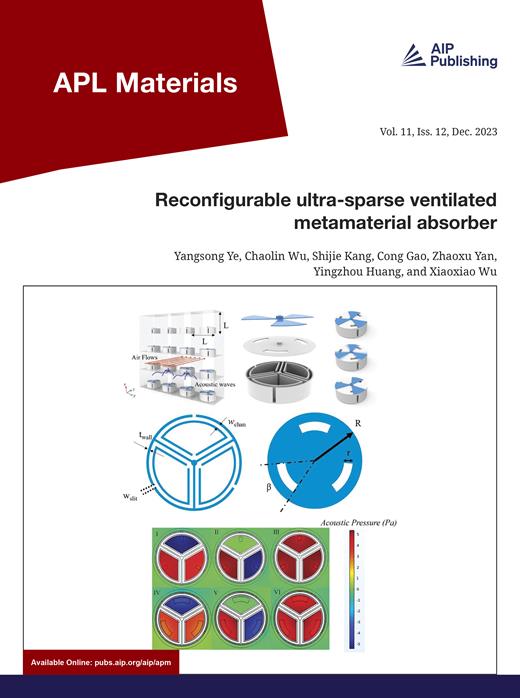用于材料发现的可解释机器学习:预测金属有机框架的二氧化碳吸附特性
IF 5.3
2区 材料科学
Q2 MATERIALS SCIENCE, MULTIDISCIPLINARY
引用次数: 0
摘要
金属有机框架(MOFs)作为具有高孔隙率和大比表面积的新型多孔结晶材料,越来越多地被用于二氧化碳吸附。机器学习(ML)与分子模拟相结合,可从数百万个 MOF 结构中识别出具有高二氧化碳吸附能力的 MOF。本研究为 ML 模型提出了 23 个结构和分子特征以及 765 个计算特征,并在不同压力下吸附 CO2 的假定 MOF 数据集上进行了训练。计算出的特征将 ML 模型的预测准确率提高了 15%-20%,并揭示了其可解释性,这与相互作用位势分析是一致的。随后,对不同压力下相关特征的重要性进行了排序。与范德华力相关的描述因子在低压下更具竞争优势,而与电场相关的描述因子则在高压下逐渐占据主导地位。总之,本研究提供了一个新的视角,可指导对作为高性能二氧化碳吸附材料的 MOFs 进行初步的高通量筛选。本文章由计算机程序翻译,如有差异,请以英文原文为准。
Interpretable machine learning for materials discovery: Predicting CO2 adsorption properties of metal–organic frameworks
Metal–organic frameworks (MOFs), as novel porous crystalline materials with high porosity and a large specific surface area, have been increasingly utilized for CO2 adsorption. Machine learning (ML) combined with molecular simulations is used to identify MOFs with high CO2 adsorption capacity from millions of MOF structures. In this study, 23 structural and molecular features and 765 calculated features were proposed for the ML model and trained on a hypothetical MOF dataset for CO2 adsorption at different pressures. The calculated features improved the prediction accuracy of the ML model by 15%–20% and revealed its interpretability, consistent with the analysis of the interaction potential. Subsequently, the importance of the relevant features was ranked at different pressures. Regardless of the pressure, the molecular structure and pore size were the most critical factors. van der Waals force-related descriptors gained more competitive advantages at low pressures, whereas electrical-field-related descriptors gradually dominated at high pressures. Overall, this study provides a novel perspective to guide the initial high-throughput screening of MOFs as high-performance CO2 adsorption materials.
求助全文
通过发布文献求助,成功后即可免费获取论文全文。
去求助
来源期刊

APL Materials
NANOSCIENCE & NANOTECHNOLOGYMATERIALS SCIE-MATERIALS SCIENCE, MULTIDISCIPLINARY
CiteScore
9.60
自引率
3.30%
发文量
199
审稿时长
2 months
期刊介绍:
APL Materials features original, experimental research on significant topical issues within the field of materials science. In order to highlight research at the forefront of materials science, emphasis is given to the quality and timeliness of the work. The journal considers theory or calculation when the work is particularly timely and relevant to applications.
In addition to regular articles, the journal also publishes Special Topics, which report on cutting-edge areas in materials science, such as Perovskite Solar Cells, 2D Materials, and Beyond Lithium Ion Batteries.
 求助内容:
求助内容: 应助结果提醒方式:
应助结果提醒方式:


